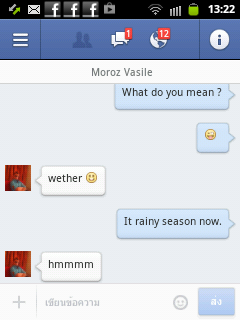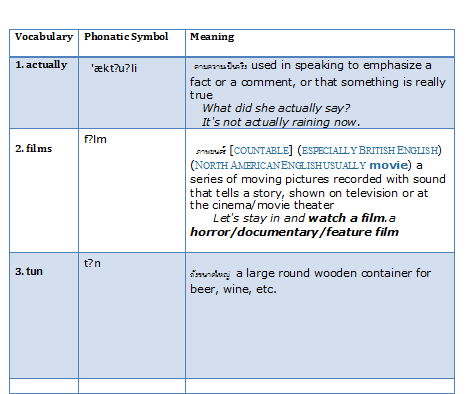Death Toll in Philippines Earthquake Rises to 144
MANILA — The death toll from a powerful earthquake that shook the Philippines rose to 144 on Wednesday, with nearly 300 people injured in the quake, which caused widespread damage and smashed one of the country’s oldest churches, officials said.
Eduardo del Rosario, the civil defense director of the Philippines, said that 291 people were injured in Tuesday’s quake by the latest count.
The earthquake was centered about 32 miles underground near the small town of Carmen, on the island of Bohol, and struck at 8:12 a.m., said Renato Solidum, the director of the Philippine Institute of Volcanology and Seismology.
“A magnitude 7 earthquake has an energy equivalent to around 32 Hiroshima atomic bombs,” Mr. Solidum said. “This one had a magnitude of 7.2.”
The tremors reverberated across adjacent islands of the central Philippines, toppling structures and sending panicked people into the streets.
“I was asleep and my bed started shaking very hard,” said Jessa Ariola, 23, a resident of Tagbilaran, a city near the earthquake’s center. She said that after the tremors stopped she went to the restaurant where she works as a cashier and found it in ruins — with broken glass, toppled appliances and raw meat scattered on the floor.
Local television showed obliterated buildings, cracked roads, downed bridges and chaotic evacuations on Bohol. The quake also damaged major buildings in Cebu City, a heavily populated commercial center on a nearby island. Among those hit were a sprawling shopping mall, a prominent hospital and a busy public market.
The main airport on Bohol was temporarily closed, as were several ports in the central Philippines, while officials inspected them for safety.
The damaged structures in Cebu included the Santo Niño de Cebu Basilica, which was founded in 1565. On Bohol, the roof of the Church of San Pedro in Loboc, which dates from 1602, collapsed. Officials said as many as 10 other historic churches appeared to have been damaged.
At least 134 people died on the island of Bohol and 9 died in nearby Cebu and one on the neighboring island of Siquijor, according to figures issued Wednesday by the National Disaster Risk Reduction Management Council. The island of Cebu, which is adjacent to Bohol, where the earthquake was centered, experienced extensive damage and injuries because it is more heavily populated, officials said.
Those who died included a 4-year-old girl who was trampled in the town of Toledo, on Cebu, when the earthquake shook a building where people were receiving cash grants from a government program to help the poor. In addition to the child who died, 19 people were injured there during a stampede out of the wobbling structure.
Officials on Tuesday afternoon were warning local residents to keep out of major buildings until their structural integrity could be verified. They also warned of landslides amid reports of aftershocks on the two most affected islands.
Electric power was disrupted in many of the affected areas. No tsunami warning was issued because the earthquake was land-based, an official of the Philippine Institute of Volcanology and Seismology said during a morning news briefing.
President Benigno S. Aquino III was visiting the affected areas on Wednesday. The islands of Cebu and Bohol have been declared in a state of calamity by the government, thus authorizing additional national government assistance to the areas.
A magnitude 6.8 earthquake struck the same island on Feb. 8, 1990, and damaged more than 3,000 houses. Last year, a magnitude 6.9 quake hit near the island of Negros, also in the central Philippines, and killed nearly 100 people.
Summarize
Earthquake Strait between the islands of Negros and Cebu islands in the central of Philippines, which are rather severe and cause the people to panic all day. Local military officials confirmed the death toll from natural disasters was 43 but Victims may increase. There are dozens of people who may have been injured or lost in the landslide. Alvin Talan Fu Gui Hun's Commissar City on Negros Island. Which is the one that has been most severely damaged said, 39 people have died in the GUI Hous Ngan city which is a coastal city flanked by mountains. It has a population of 100,000 people and near the center of the earthquake as well.
|
วันอาทิตย์ที่ 29 กันยายน พ.ศ. 2556
Reading Practice
วันเสาร์ที่ 28 กันยายน พ.ศ. 2556
Reading skill
Idiom: to be in the pipeline, to have (got) something in the pipeline
Means: being prepared, being worked on but not ready yetUse: A business idiom used to refer to projects or plans for events or things that are not ready yet
Circumstances: To indicate that you have plans or are planning something
Note: When used with ‘to be’ – the expression is often a confirmation ‘Yes, it is in the pipeline’. ‘It’ refers to the thing being prepared which was mentioned by the person asking a question.
Some examples:
We have lots of interesting products in the pipeline. At least one will be launched this winter.
Are you going to add a small business consultancy service? – Yes, it’s in the pipeline. We will make an announcement shortly.
Your turn:
Think about your company or the government’s plans:
(name of company/the government) has lots of plans in the pipeline. It’s going to (what)+(when)
Think of another four examples.
This blog has many more examples of idioms in the pipeline!
Summarize
I like to read about idioms I try to remember it but I don’t know how to use? Or when I can use it. So today, I would like to present about the idioms “to have a lot on”. It means “being prepared, being worked on but not ready yet” .You can use it when you want to refer projects or plans for events or things that are not ready yet. When used with ‘to be’ – the expression is often a confirmation ‘Yes, it is in the pipeline’. ‘It’ refers to the thing being prepared which was mentioned by the person asking a question.
วันอังคารที่ 10 กันยายน พ.ศ. 2556
Reading skill
Idiom: to get up to
Means: to do
Use: to ask about activities
Circumstances: Usually used to ask about the things someone did in a time period – at the weekend, at work today
Note: The subject is nearly always a person or group of people. This form is mainly used in questions. When replying to the question it is common to list the things you did – often using the simple past and adding your opinion as to how much you liked or disliked what you did.
A negative reply is possible and ‘much’ can be used: ‘I didn’t get up to much.’Some examples:
A) What did you get up to at the weekend? B) We went skiing in the mountains. Had a great time too.
A) What did they get up to on holiday? B) Sounds as though they had a terrible time. It rained the whole two weeks.
Your turn:
Think about some people you know:
Ask yourself this question: What did (Person) get up to at the weekend? eg What did Mario get up to at the weekend?
You could write the replies. Then think of another four people you could ask.
Advanced usage: I hope to be getting up to a lot this weekend. We’ve got some friends coming to stay.
Summarize
I like to read about idioms I try to remember it but I don’t know how to use? Or when I can use it. So today, I would like to present about the idioms “to get up to”. It means “to do” .You can use it when you want to ask someone about activity. It often using the simple past and adding your opinion as to how much you liked or disliked what you did and usually used to ask about the things someone did in a time period – at the weekend, at work today.
วันพฤหัสบดีที่ 5 กันยายน พ.ศ. 2556
Writing practice
I have a friend who lived in Greece. He name is Moroz Vasile . I never said with foreigner .He is the first foreigner that I said.
First, we talk about greeting .He introduce himself to me and I introduce myself to him. Next, we are talking about beautiful place in Thailand. He asks me to know about most beautiful place of Thailand.I tell him the beach in Thailand are most beautiful.Then, we are talking about season in Thailand. He asks me to know about season in Thailand now.I tell him ,in Thailand are rainy season. He tell me, he don’t like rainy season.
He is in Greece. He want to know about most beautiful place and about season in Thailand now.
To sum up, I feel very happy when I chat with Moroz Vasile. I think , he very friendly and funny.
He can helps me brave to speak with foreigner. I can know more vocabulary and phrase from speak with him.
|
วันจันทร์ที่ 2 กันยายน พ.ศ. 2556
Learning Log
Today is first class after finish observed.I and
friend are share experience together. Today my friends are teaching test 3
people, after that teacher tell us about “How we should do?” about
observation.
First, Kanjanapond is the first one that
teaching test. She teach about “Occupation”.When she finish test, her friend
assess her about she don’t speak agilely, she have more exercise and her plane
are wrong .So she don’t pass. Next, Nisarin is the second one that teaching
test. She teach about “food” and she pronounce the alphabet “V “. When she
finish test, her friend assess her about she speak agilely, loudly and she is
self-confident . So she pass. Then, Irunneeson is the last person that teaching
test. She teaches about “direction”. When she finish test, her friend assess
her about teaching method of her are good but she don’t speak loudly. So she
pass. After that, teacher talk about observation of us and tell us about “How
we should do?”.
From studying today, I can learn about the
method for to do lesson plane, I can know about technique of teaching and I can
shear opinion together.
สมัครสมาชิก:
บทความ (Atom)



